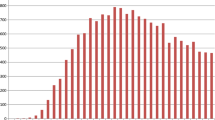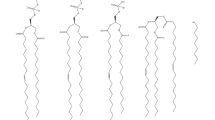Abstract
Purpose. To develop an integrated model for microdialysis data that incorporates all data including the recovery measurements in one model, and to compare this model to a previous model and the results from a noncompartmental analysis.
Methods. The models were developed in NONMEM. The modes of analysis were compared with respect to parameter estimates, model structures, gained mechanistic insight, and practical aspects.
Results. Both modeling approaches resulted in similar model structures. The parameter estimates in blood and brain from the models and the results from the noncompartmental analysis were comparable. Using the integrated model all data, that is, the total arterial concentrations, the venous and brain dialysate concentrations, and the recovery measurements, were analyzed simultaneously.
Conclusion. The theoretical benefits of the integrated model are related to the inclusion of the recovery in the model and the use of all collected data as it was observed. Thus, all data are described in a single model, corrections for the recovery and the protein binding are done within the model, and the dialysate observations are described by the integral over each collection interval. Thereby, the variability and the uncertainty in the model parameters are handled correctly to give more reliable parameter estimates.
Similar content being viewed by others
REFERENCES
P. M. Bungay, P. F. Morrison, and R. L. Dedrick. Steady-state theory for quantitative microdialysis of solutes and water in vivo and in vitro. Life Sci. 46:105-119 (1990).
M. R. Bouw and M. Hammarlund-Udenaes. Methodological aspects of the use of a calibrator in in vivo microdialysis-further development of the retrodialysis method. Pharm. Res. 15:1673-1679 (1998).
K. Tunblad, E. N. Jonsson, and M. Hammarlund-Udenaes. Morphine blood-brain barrier transport is influenced by probenecid co-administration. Pharm. Res. 20:618-623 (2003).
L. Ståhle. Pharmacokinetic estimations from microdialysis data. Eur. J. Clin. Pharmacol. 43:289-294 (1992).
P. N. Patsalos, W. T. Abed, M. S. Alavijeh, and M. T. O'Connell. The use of microdialysis for the study of drug kinetics: some methodological considerations illustrated with antipyrine in rat frontal cortex. Br. J. Pharmacol. 115:503-509 (1995).
S. L. Beal and L. S. Sheiner. NONMEM user's guide, NONMEM Project Group. University of California at San Fransisco, 1994.
E. N. Jonsson and M. O. Karlsson. Xpose–an S-PLUS based population pharmacokinetic/pharmacodynamic model building aid for NONMEM. Comput. Methods Programs Biomed. 58:51-64 (1999).
J. Wade and M. O. Karlsson. PAGE meeting. Available at www.page-meeting.org/ (1999).
U. Bickel, O. P. Schumacher, Y. S. Kang, and K. Voigt. Poor permeability of morphine 3-glucuronide and morphine 6-glucuronide through the blood-brain barrier in the rat. J. Pharmacol. Exp. Ther. 278:107-113 (1996).
P. Sjöberg, I.-M. Olofsson, and T. Lundqvist. Validation of different microdialysis methods for the determination of unbound steady-state concentrations of theophylline in blood and brain tissue. Pharm. Res. 9:1592-1598 (1992).
Y. Wang, S. L. Wong, and R. J. Sawchuk. Microdialysis calibration using retrodialysis and zero-net flux: application to a study of the distribution of zidovudine to rabbit cerebrospinal fluid and thalamus. Pharm. Res. 10:1411-1419 (1993).
R. Xie and M. Hammarlund-Udenaes. Blood-brain barrier equilibration of codeine in rats studied with microdialysis. Pharm. Res. 15:570-575 (1998).
M. R. Bouw, R. Xie, K. Tunblad, and M. Hammarlund-Udenaes. Blood-brain barrier transport and brain distribution of morphine-6-glucuronide in relation to the antinociceptive effect in rats–pharmacokinetic/pharmacodynamic modelling. Br. J. Pharmacol. 134:1796-1804 (2001).
M. Hammarlund-Udenaes. The use of microdialysis in CNS drug delivery studies. Pharmacokinetic perspectives and results with analgesics and antiepileptics. Adv. Drug Deliv. Rev. 45:283-294 (2000).
J. F. Ghersi-Egea, B. Leninger-Muller, G. Suleman, G. Siest, and A. Minn. Localization of drug-metabolizing enzyme activities to blood-brain interfaces and circumventricular organs. J. Neurochem. 62:1089-1096 (1994).
Author information
Authors and Affiliations
Rights and permissions
About this article
Cite this article
Tunblad, K., Hammarlund-Udenaes, M. & Jonsson, E.N. An Integrated Model for the Analysis of Pharmacokinetic Data from Microdialysis Experiments. Pharm Res 21, 1698–1707 (2004). https://doi.org/10.1023/B:PHAM.0000041468.00587.c6
Issue Date:
DOI: https://doi.org/10.1023/B:PHAM.0000041468.00587.c6




